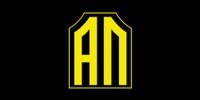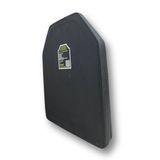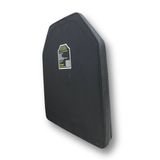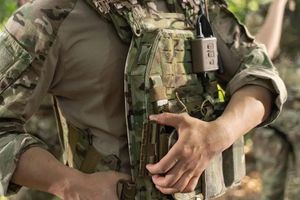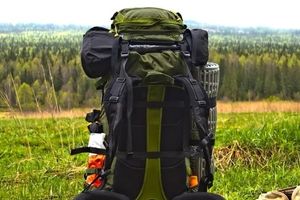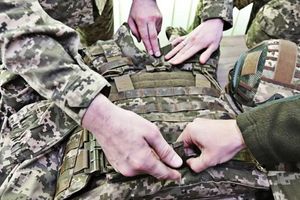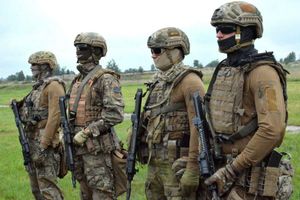Body armor is widely used by military personnel, police and security guards. In a war, the demand for bulletproof vests is growing. If you are a civilian who needs body armor for personal protection, you should be more familiar with their varieties.
Standard vests protect only the most important organs, which allows you to reduce weight and improve mobility. However, you can select additional armor modules on the respective models - adapt your equipment to different levels of threat with modular belts, neck and groin components. This modularity provides maximum flexibility by combining the protection zone of full ballistic vests and the comfort of plate carriers in one system.
Plate carriers or plate carriers are a tactical armor system designed to house hard or soft ballistic armor components to protect vital organs. There are many types of such protection. This article will provide you with up-to-date information about the different types of body armor so that you can choose the models that suit your needs.
How are body armor classified in Ukraine?
In Ukraine, body armor is classified in accordance with DSTU 8782:2018 and American standards NIJ 0101.04 / NIJ 0101.06.
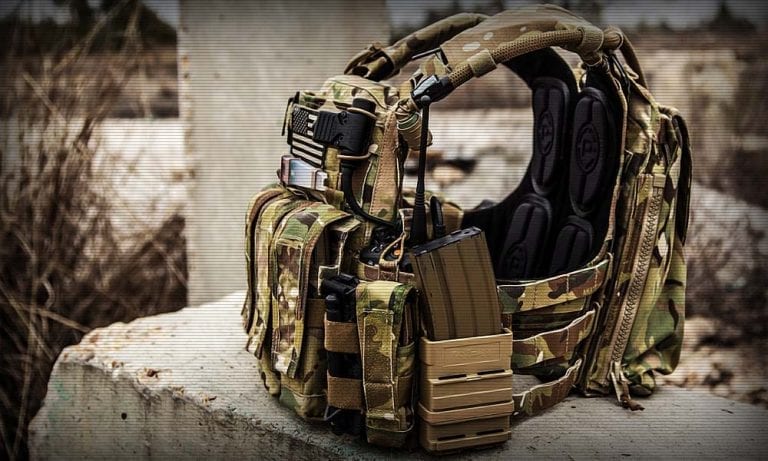
Ukrainian standard DSTU 8782:2018 divides body armor into 10 classes:
- 1, 1a;
- 2;
- 3, 3a;
- 4, 4a;
- 5, 5a;
- 6.
The class is determined by the level of protection against a bullet with the specified characteristics in certain conditions. Test methods are described in the DSTU 8788:2018 standard.
NIJ-0101.06 is the latest published NIJ standard that specifies minimum resistance requirements and test methods that must be followed for ballistic resistant vests and plates. The NIJ 0101.04 standard is older, so NIJ 0101.04 body armor will not pass the latest NIJ 0101.06 standard test.
According to NIJ-0101.06, there are 5 levels of protection:
- IIA;
- II;
- IIIA;
- III;
- IV.
Another classification includes different types of armor:
- Type A - soft body armor. Protective materials bend in any direction. This type belongs to classes IIA, II and IIIA NIJ (USA) and 1, 2 DSTU of Ukraine.
- Type B - semi-rigid vests. Here, hard plates are combined with soft protective materials. This type includes a standard army vest.
- Type B - hard body armor, also known as plate carrier. Rigid armor plates based on pressed polyethylene, ceramic and steel materials are used here.
Vests are also distinguished by the way they are worn. Some models are designed for concealed wear - they have a minimum volume and weight so as not to stand out under clothing. Open wear vests are more voluminous, an example is the classic army body armor.
What are soft body armor made of? Pros and cons of NVMPE and paraaramid
In type A soft vests, protective materials based on paraamides and ultra-high molecular weight polyethylene (UHMWPE) are most often used.
Paraamides include Kevlar, Twaron, Chirocron. Their main advantages:
- Kevlar fiber has a tensile strength of about 3620 MPa and a relative density of 1.44;
- Para-amides retain their strength and resistance to cryogenic temperatures (-196 °C).
However, at high temperatures, the tensile strength immediately decreases by about 10-20%, and after a few hours it gradually decreases further. Another disadvantage is that water greatly reduces the protective properties of paraamide, so bulletproof vests with such materials must be airtight. After drying, the paraamide completely restores its properties, but this takes time. At room temperature, this can take up to 7-8 days.
NVMPE is a lightweight material. With the same ballistic resistance as paraamide, it is about a third lighter. NVMPE is also not as sensitive to water, but the vest still needs to be airtight. If moisture gets between the layers of the material, the impact of a bullet can lead to water hammer, which will lead to a breakdown of the protective part of the vest. NVMPE is also not very resistant to high temperatures, prolonged exposure to +120 ° C leads to the destruction of the material.
Body armor and fragments. What is V50?
Soft body armor protects against debris and grenade fragments. The V50 indicator is responsible for such protective properties. The vests are tested by firing 1.1 g metal cylinders at them.They are directed into the body armor with increasing speed until the bullets begin to penetrate the armor.
The rate at which 50% of the bullets fail to penetrate and 50% of the bullets penetrate the vest is the V50 rating for this ballistic protection. That is, if at a speed of 600 m / s the vest missed 50% of the bullets, it has an indicator of V50600.
Type B - body armor with rigid elements only
Body armor with rigid plates belongs to class B. According to DSTU standards, they have protection class 3 and higher. The class provides protection against cartridges 5.45x39 and 7.62x39 with a steel bullet. Also, Grade 3 is effective against .223 Rem FMG and 7.62 LPS (which belongs to Grade 4), but is unstable against 5.45 PP bullets with reinforced media. Most plates are made of steel, less often - NVMPE. The second option will be lighter, but will have a much greater thickness and price.
Protective properties of class 3 plates at different distances
To be certified by the NIJ, manufacturers must test body armor at an NIJ-approved factory. It is here that bulletproof vests are tested for ballistics, endurance and stress conditions. Most NIJ compliance tests are conducted using 14 or more sets of body armor. A minimum of 11 larger panels are tested along with three or more smaller panels.

Each body armor panel must withstand 6 shots. Four shots - in the chest area, and two - 2 inches from the edge of the vest. For shots from a pistol, the distance reaches 5 meters. For shots from a rifle - 15 meters. The greater the distance, the weaker the penetrating ability of the bullet.
Materials for class 4 slabs
The vast majority of plates of protection class 4 are made of armored steel. They have a large weight - from 3.3 to 4.5 kg. There are 2 types of plates:
- Stand alone (STA). Apart from the slab, no other protection is used to stop the threat level set. STA plates are thicker and heavier.
- In conjunction with (ICW). In conjunction with (ICW). In combination with the slab, several soft parts are used to provide protection against the established threat level. Ballistic vests are specially designed with a front pocket that is large enough to hold an ICW plate.
These two options allow you to choose the best type of protection for the highest standards and modern equipment.
Slabs of grades 5 and 6
Starting from class 5 the plates are able to protect against bullets 7.62x39 mm weighing up to 8 g. They are designed to protect against armor-piercing bullets. Ceramic plates are able to withstand several direct hits and remain intact.
Comparison of steel and ceramic plates
In the past, soldiers had only one type of body armor: a heavy steel plate. But today there is a luxury to choose ceramics, steel, Kevlar and polyethylene. Steel plates have been around for a long time, but they are rarely used today. Due to their large thickness and weight, they severely restrict movement, and therefore are unsuitable for modern combat.
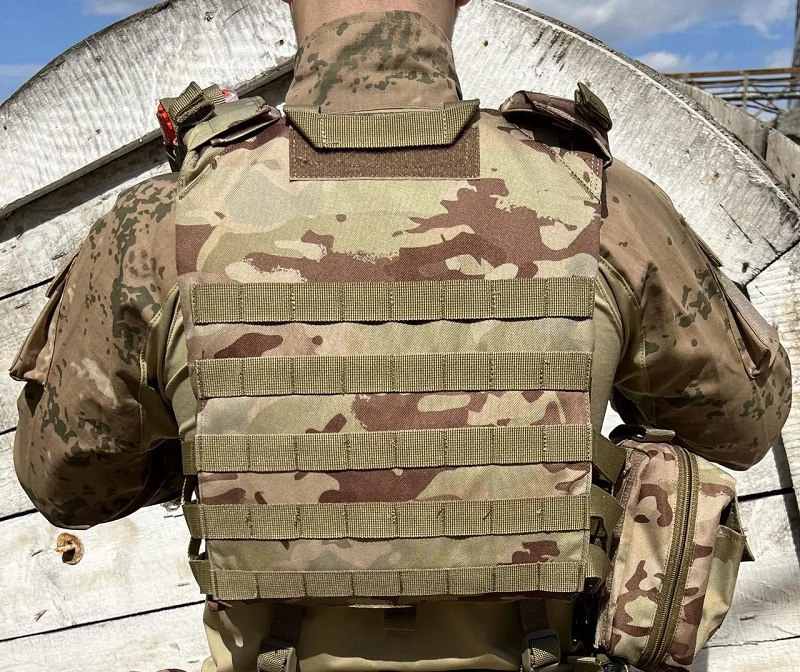
Ceramic plates are made of different materials:
- corundum or aluminum oxide;
- silicon carbide;
- boron carbide.
Today, ceramics are commonly used to insert into the outer layer of soft ballistic vests and serve as a form of composite armor. They are also used in plate carriers. For added protection, the vests also contain NVMPE or para-aramid.
The weight of a class 3 NIJ plate is approximately 1.8 to 3.6 kg for a standard size 25x30 cm.
On the other side of the scale are steel bulletproof vests. The two biggest advantages of steel over ceramic are that it is cheap and durable. Ceramic vests can last from 5 to 7 years, and
steel - within 15-20 years. But there is also a significant disadvantage - most steel plates weigh from 3 kg. Thus, they can cause fatigue and slow down movements.
Which is better - to catch a bullet without body armor or in body armor of the wrong class
There is a stereotype that the wrong body armor is better than none. Let's debunk this dangerous myth.
When the bullet passes right through, it does little harm, if not vital organs. If the bullet pierced the body armor of the wrong class, the damage will be much more serious.
Will a bulletproof vest save you from a sniper?
In most cases, no. The exact answer depends on the rifle the bullet was fired from and the distance from which the sniper fired. No body armor will protect against cartridges such as .338 LM or .50BMG. No class of vests guarantees protection against such bullets. In addition, when a bullet hits a body armor, a strong impact can seriously injure or even kill a person, even if the vest stops the bullet.
How to choose the color of body armor?
Since bulletproof vests are associated with military tactical operations, the choice of color will logically mimic the area where they are produced. In the Armed Forces of Ukraine, bulletproof vests have the MM-14 pattern or Camouflage Pattern 2014. Open-wear vests for the military often have a camouflage pattern.
If you are not defending the country in the ranks of the Armed Forces of Ukraine, it is better to abandon the MM-14 or camouflage pattern so that you are not mistaken for the enemy. A large selection of colors is available to citizens:
- black;
- coyote (desert or khaki);
- olive green;
- tactical gray;
- blue.
This is not an exhaustive color list, just popular options.
How to choose a high-quality body armor case? Fabrics for plate carriers
The main materials for plate carriers are cordura (nylon) and oxford (polyester).
Nylon is a stronger material that can last for many years. Some manufacturers may pass off polyester as nylon, so it's a good idea to check the material before purchasing. This is easy to do: just set fire to a small standard. Nylon gives off white smoke and burnt hair smell, and may have a chemical taste. Polyester burns with black smoke and smells like Styrofoam. A cover made of this material is not so durable, so the service life will be much shorter.

Firearms are one of the most dangerous threats faced by police, border guards, security guards and the military. Although there is no truly "bulletproof" vest, protective body armor is an important part of personal safety equipment for those whose profession or environment threatens them.
Author of the review Ulyana Radostina
